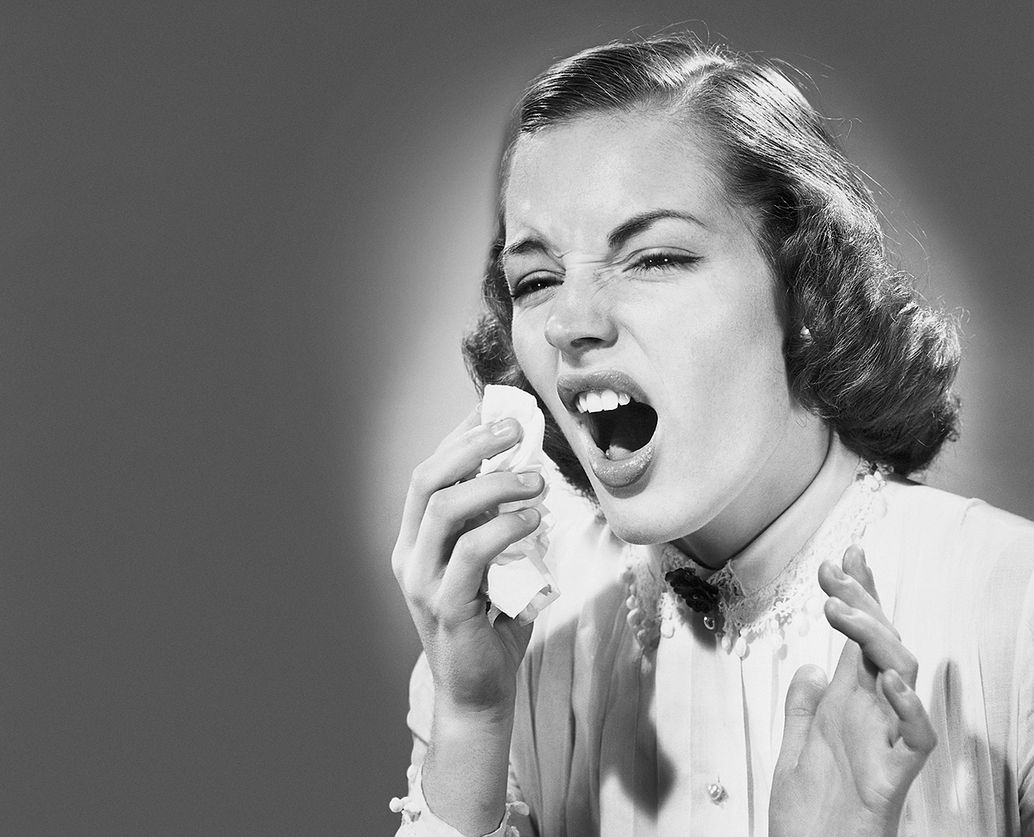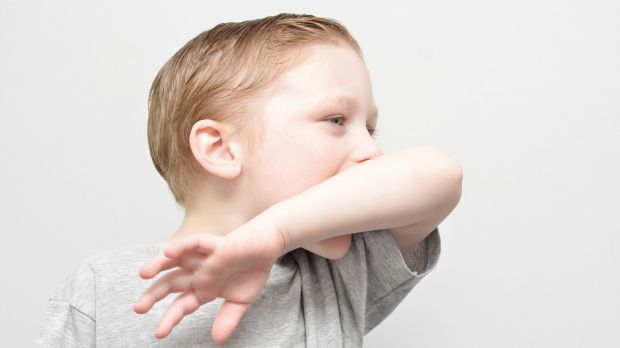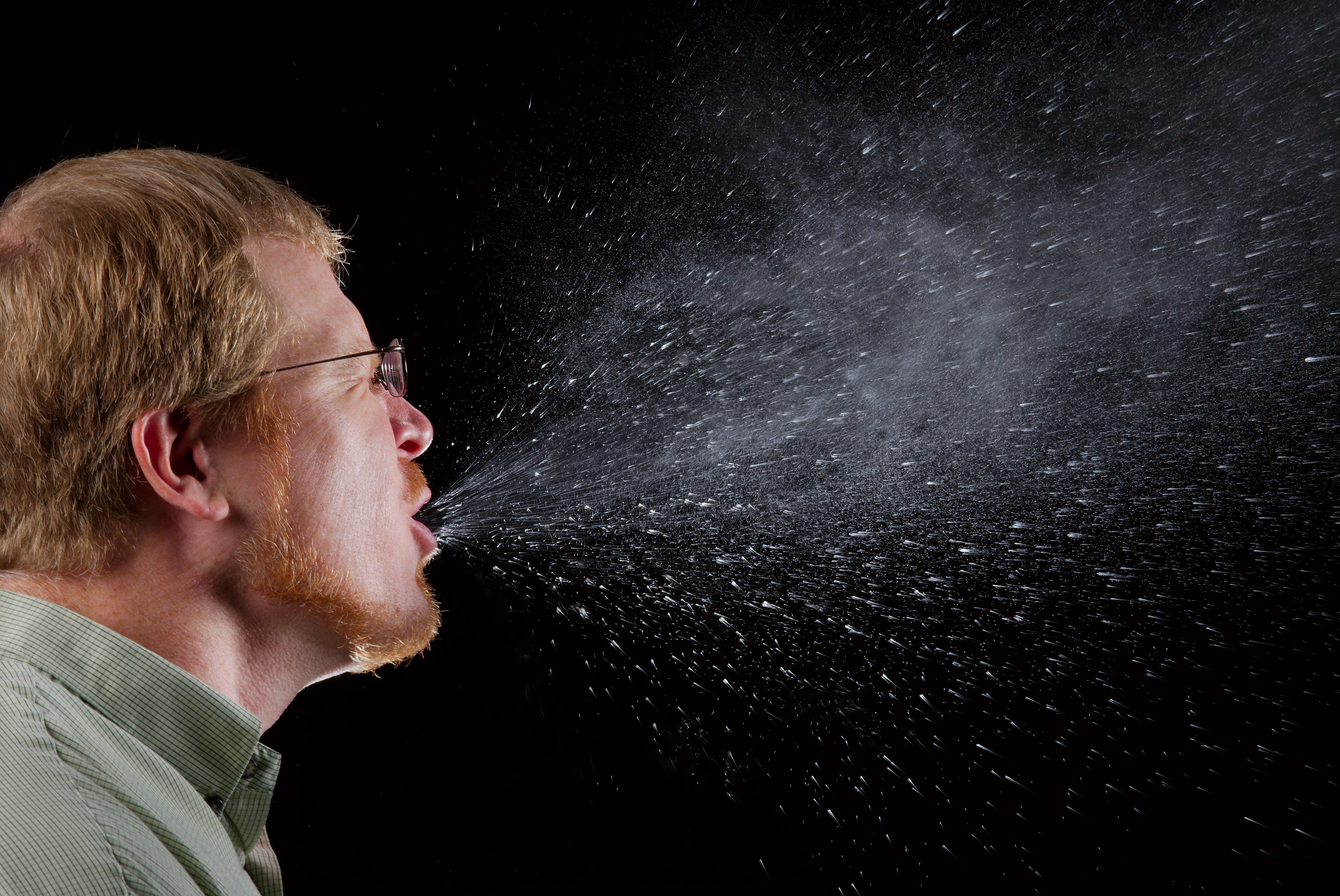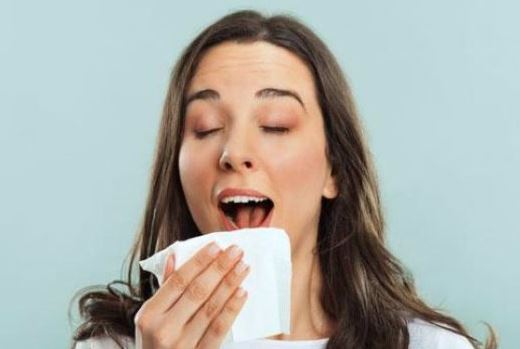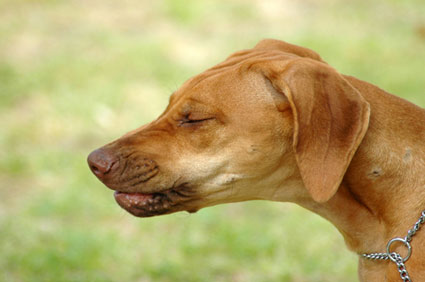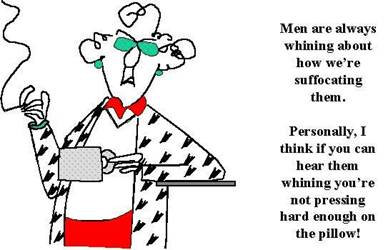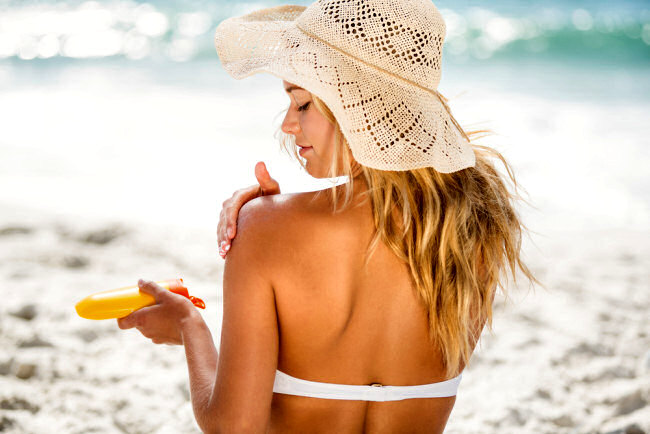|
|
||
|
||
|
Privacy Policy | Editorial Policy | Profit Policy | Join the Association | List of Members | Contact us | Index | Links |
||
|
Back Go to page: 1 2 3 4 5 6 7 8 9 10 11 12 13 14 15 16 17 18 19 20 Forward
|
||
|
Health and Life Style. |
||
| Veterans and Veterans Families Counselling Service (VVCS) can be reached 24 hours a day across Australia for crisis support and free and confidential counseling. Phone 1800 011 046. VVCS is a service founded by Vietnam Veterans. |
||
|
Contents:
|
||
|
Now that Spring has sprung, hopefully all the colds and runny noses are a thing of the past and won’t surface again until sometime next year. The flu epidemic hit pretty hard this year and it was not uncommon to see heaps of people walking along sneezing, which got us wondering, what is a sneeze and what’s the purpose and the use of a sneeze.
A sneeze, or sternutation, is a semi-autonomous, convulsive expulsion of air from the lungs through the nose and mouth, usually caused by foreign particles irritating the nasal mucosa membrane. A sneeze expels air forcibly from the mouth and nose in an explosive, spasmodic involuntary action which allows for mucus to escape through the nasal cavity. Sneezing is possibly linked to sudden exposure to bright light, sudden change (fall) in temperature, breeze of cold air, a particularly full stomach, or viral infection and can lead to the spread of disease.
During a sneeze, the soft palate and palatine uvula depress while the back of the tongue elevates to partially close the passage to the mouth so that air ejected from the lungs may be expelled through the nose. Because the closing of the mouth is partial, a considerable amount of this air is usually also expelled from the mouth. The force and extent of the expulsion of the air through the nose varies.
Sneezing cannot occur during sleep due to REM atonia – a bodily state where motor neurons are not stimulated and reflex signals are not relayed to the brain. Sufficient external stimulants, however, may cause a person to wake from sleep to sneeze, but any sneezing occurring afterwards would take place with a partially awake status at minimum.
Sneezing typically occurs when foreign particles or sufficient external stimulants pass through the nasal hairs to reach the nasal mucosa. This triggers the release of histamines, which irritate the nerve cells in the nose, resulting in signals being sent to the brain to initiate the sneeze through the trigeminal nerve network. The brain then relates this initial signal, activates the pharyngeal and tracheal muscles and creates a large opening of the nasal and oral cavities, resulting in a powerful release of air and bioparticles. The powerful nature of a sneeze is attributed to its involvement of numerous organs of the upper body – it is a reflexive response involving the face, throat, and chest muscles. Sneezing is also triggered by sinus nerve stimulation caused by nasal congestion and allergies.
The sneeze reflex involves contraction of a number of different muscles and muscle groups throughout the body, typically including the eyelids. The common suggestion that it is impossible to sneeze with one's eyes open is, however, inaccurate. Other than irritating foreign particles, allergies or possible illness, another stimulus is sudden exposure to bright light – a condition known as photic sneeze reflex (PSR). Walking out of a dark building into sunshine may trigger PSR, or the ACHOO (autosomal dominant compulsive helio-ophthalmic outbursts of sneezing) syndrome as it's also called. The tendency to sneeze upon exposure to bright light affects 18-35% of the human population. A rarer trigger, observed in some individuals, is the fullness of the stomach immediately after a large meal. This is known as snatiation and is regarded as a medical disorder passed along genetically as an autosomal dominant trait.
Epidemiology
While generally harmless in healthy individuals, sneezes spread disease through the infectious aerosol droplets, commonly ranging from 0.5 to 5.0µm (micrometre). A sneeze can produce 40,000 droplets. To reduce the possibility of thus spreading disease (such as the flu), one holds the forearm or the inside of the elbow in front of one's mouth and nose when sneezing. Using one's hand for that purpose has recently fallen into disuse as it is considered inappropriate, since it promotes spreading germs through human contact (such as handshaking) or by commonly touched objects (most notably doorknobs).
Examples of preventive techniques are:
Proven methods to reduce sneezing generally advocate reducing interaction with irritants, such as keeping pets out of the house to avoid animal dander; ensuring the timely and continuous removal of dirt and dust particles through proper housekeeping; replacing filters for furnaces and air-handling units; air filtration devices and humidifiers; and staying away from industrial and agricultural zones. Some people, however, find sneezes to be pleasurable and would not want to prevent them.
In English-speaking countries, one common verbal response to another person's sneeze is "God bless you". Another common verbal response to another's sneeze is "Gesundheit", which is a German word that means, appropriately, "good health". Several hypotheses exist for why the custom arose of saying "bless you" or "God bless you" in the context of sneezing:
Other cultures have similar traditions.
Some people may sneeze during the initial phases of sexual arousal. Doctors suspect that the phenomenon might arise from a case of crossed wires in the autonomic nervous system, which regulates a number of functions in the body, including "waking up" the genitals during sexual arousal. The nose, like the genitals, contains erectile tissue. This phenomenon may prepare the vomeronasal organ for increased detection of pheromones.
A sneeze has been compared to an orgasm, since both orgasms and sneeze reflexes involve tingling, bodily stretching, tension and release. On this subject, sexologist Vanessa Thompson from the University of Sydney states, “Sneezing and orgasms both produce feel-good chemicals called endorphins but the amount produced by a sneeze is far less than an orgasm.”
According to Dr. Holly Boyer from the University of Minnesota, there is a pleasurable effect during a sneeze, where she states, “the muscle tension that builds up in your chest causes pressure, and when you sneeze and the muscles relax, it releases pressure. Anytime you release pressure, it feels good...There’s also some evidence that endorphins are released, which causes your body to feel good”. Endorphins induce the brain’s reward system, and because sneezes occur in a quick burst, so does the pleasure
Sneezing while menstruating may result in a sudden vaginal menses emission.
Sneezing is not confined to humans or even mammals. Many animals including cats, dogs, chickens and iguanas sneeze. African wild dogs use sneezing as a form of communication, especially when considering a consensus in a pack on whether or not to hunt.
A long-standing estimate pins the velocity of a sneeze at roughly 100 meters per second, or 224 miles per hour, but that appears to be a gross exaggeration. The figure originates from a mid-century researcher named William Firth Wells, who analyzed the size of airborne droplets from a sneeze and then inferred the speed at which air must travel across a liquid surface to form them. Wells' figure has been repeated for many years but never directly tested in the lab. "I think people have been waiting for someone to come along and debunk it," says Julian Tang, a medical virologist at the Alberta Provincial Laboratory for Public Health in Edmonton.
For a study published this year, Tang and his colleagues used high-speed cameras to take pictures of pepper-induced sneezes from six volunteers. The team captured each sneeze by positioning the volunteers in front of a concave mirror and then shining an LED beam toward it. The warm air from the sneeze has a different refractive index than the cooler ambient air, so the reflected LED bends differently. The camera records the changes, and scientists can map the sneeze.
The study found that a sneeze's maximum velocity is nowhere near 100 meters per second but instead reaches a high of 4.5 meters per second, or 10 miles per hour. That's comparable to the velocity of air expelled by coughing—and a violent cough can push up a larger volume of air, which requires even more force. "The sneeze is really coming from your upper respiratory tract," Tang explains. Tang, who did his study in Singapore, acknowledges that his numbers might have come out differently if he'd chosen different subjects. "All my data is from these rather slim Asian students," he says. "If somebody did this in the North American setting, with the bigger body frames that they have here, they might find higher velocities."
|
||
|
|
||
|
|
||
|
Best sunscreen: Understand sunscreen options.
Now that the sun is on the way back it’s time to recall the old “Slip, slop, slap” message. It’s time to head off to the Chemist and stock up on sunscreen and to limit your time exposed in the sun.
What are the best ways to protect yourself from the sun? Focus on the big picture when it comes to sun safety. For example:
What does a broad-spectrum sunscreen do?
There are two types of UV light that can harm your skin, UVA and UVB. A broad-spectrum sunscreen protects you from both. UVA rays can prematurely age your skin, causing wrinkling and age spots. UVB rays can burn your skin. Too much exposure to UVA or UVB rays can cause skin cancer. The best sunscreen offers protection from UV light.
What SPF do you need?
SPF stands for sun protection factor, a measure of how well sunscreen protects against UVB rays. (UVA protection isn't rated.) Manufacturers calculate SPF based on how long it takes to sunburn skin treated with the sunscreen as compared to skin with no sunscreen. Experts recommend using a sunscreen with an SPF of at least 30. Sunscreens with SPFs greater than 50 provide only a small increase in UV protection. High-number SPFs last the same amount of time as low-number SPFs.
Sunscreen is often not applied thoroughly or thickly enough and it can be washed off during swimming or sweating. As a result, sunscreen might be less effective than the SPF number suggests. The term water resistant means that the SPF is maintained for up to 40 minutes in water. Very water resistant means the SPF is maintained for 80 minutes in water.
What do I need to know about sunscreen ingredients?
Sunscreens contain filters that reflect or absorb UV rays. There are two main types of filters:
Sunscreens might also contain or be combined with:
Should I use a spray sunscreen or a lotion? Consider the pros and cons for different applications, including:
When you use sunscreen:
Use sunscreen year-round, but don't let any product lull you into a false sense of security about sun exposure. A combination of shade, clothing, sunscreen and common sense is your best bet.
JUST for you Sambo.
|
||
|
|
||
|
|
||
|
High blood pressure dangers: Hypertension's effects on your body.
High blood pressure (hypertension) is a risk factor for more than heart disease.
It can quietly damage your body for years before symptoms develop. Left uncontrolled, you may wind up with a disability, a poor quality of life or even a fatal heart attack. Roughly half the people with untreated hypertension die of heart disease related to poor blood flow (ischemic heart disease) and another third die of stroke. Treatment and lifestyle changes can help control your high blood pressure to reduce your risk of life-threatening complications. This is what the complications high blood pressure can cause when it's not effectively controlled.
Damage to your arteries.
Healthy arteries are flexible, strong and elastic. Their inner lining is smooth so that blood flows freely, supplying vital organs and tissues with nutrients and oxygen. Hypertension gradually increases the pressure of blood flowing through your arteries, as a result, you might experience:
Damage to your heart.
Your heart pumps blood to your entire body. Uncontrolled high blood pressure can damage your heart in a number of ways, such as:
Damage to your brain
Just like your heart, your brain depends on a nourishing blood supply to work properly and survive. But high blood pressure can cause several problems, including:
Damage to your kidneys.
Your kidneys filter excess fluid and waste from your blood — a process that depends on healthy blood vessels. High blood pressure can injure both the blood vessels in and leading to your kidneys, causing several types of kidney disease (nephropathy). Having diabetes in addition to high blood pressure can worsen the damage.
Damage to your eyes.
Tiny, delicate blood vessels supply blood to your eyes. Like other vessels, they, too, can be damaged by high blood pressure:
Sexual dysfunction
Although the inability to have and maintain an erection (erectile
dysfunction) becomes increasingly common in men as they reach age
50, it's even more likely to occur if they have high blood pressure,
too. Over time, high blood pressure damages the lining of your blood
vessels and causes your
Women may have sexual dysfunction as a side effect of high blood pressure, as well. High blood pressure can reduce blood flow to your vagina. For some women, this leads to a decrease in sexual desire or arousal, vaginal dryness, or difficulty achieving orgasm. Improving arousal and lubrication can help. Like men, women can experience anxiety and relationship issues due to sexual dysfunction.
Other possible dangers of high blood pressure.
High blood pressure can also affect other areas of the body, leading to such problems as:
High blood pressure emergencies.
High blood pressure is usually a chronic condition that gradually causes damage over the years. But sometimes blood pressure rises so quickly and severely that it becomes a medical emergency requiring immediate treatment, often with hospitalization.
In these situations, high blood pressure can cause:
|
||
|
|
||
|
|
||
|
|
||
|
|
||
|
|
||
|
|


